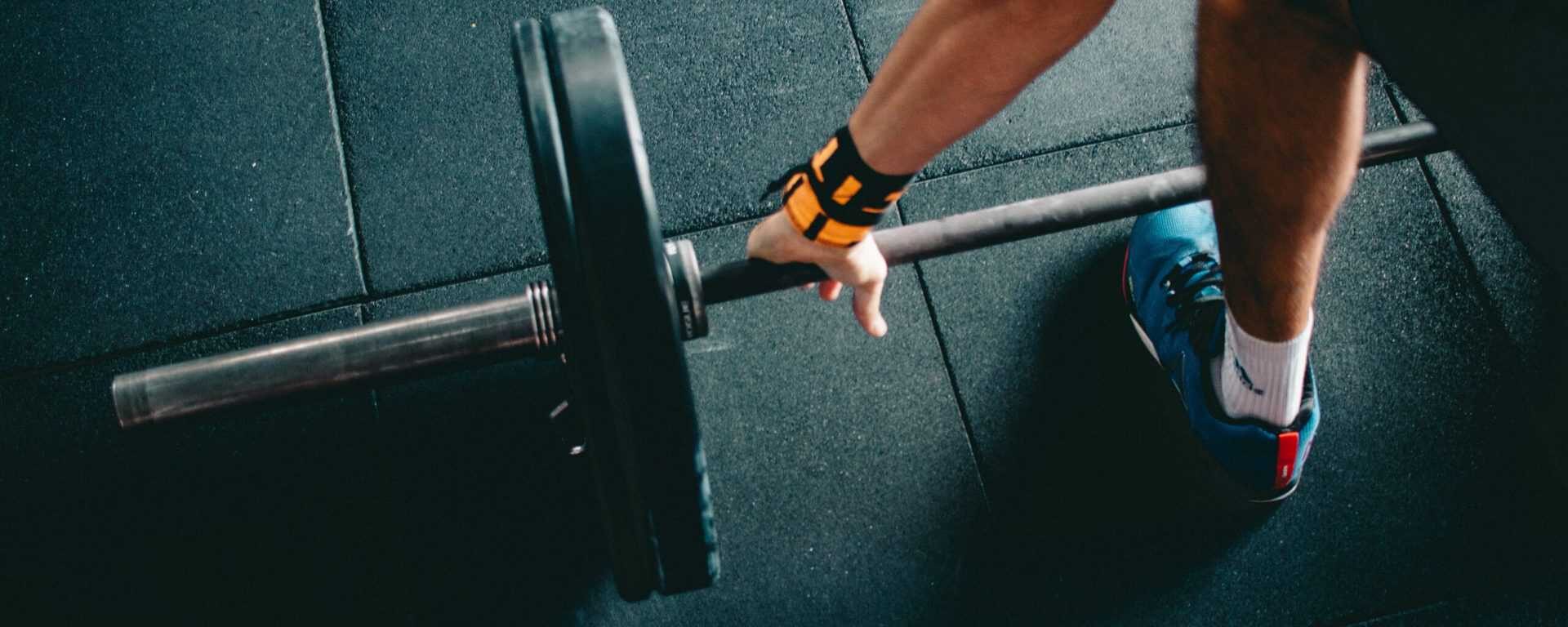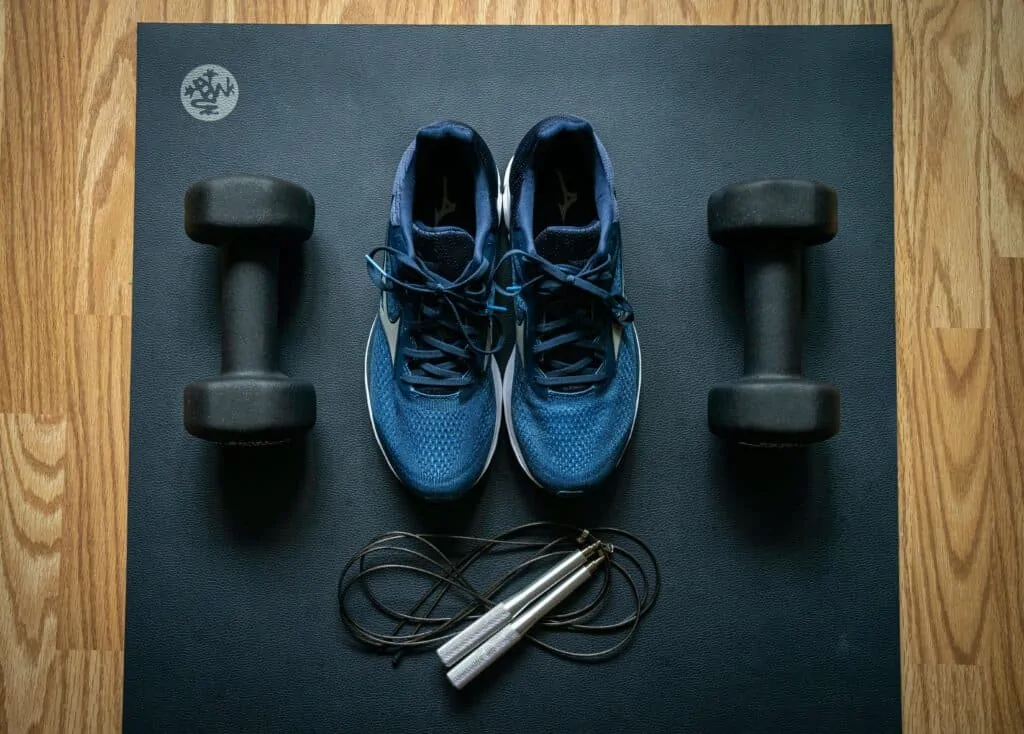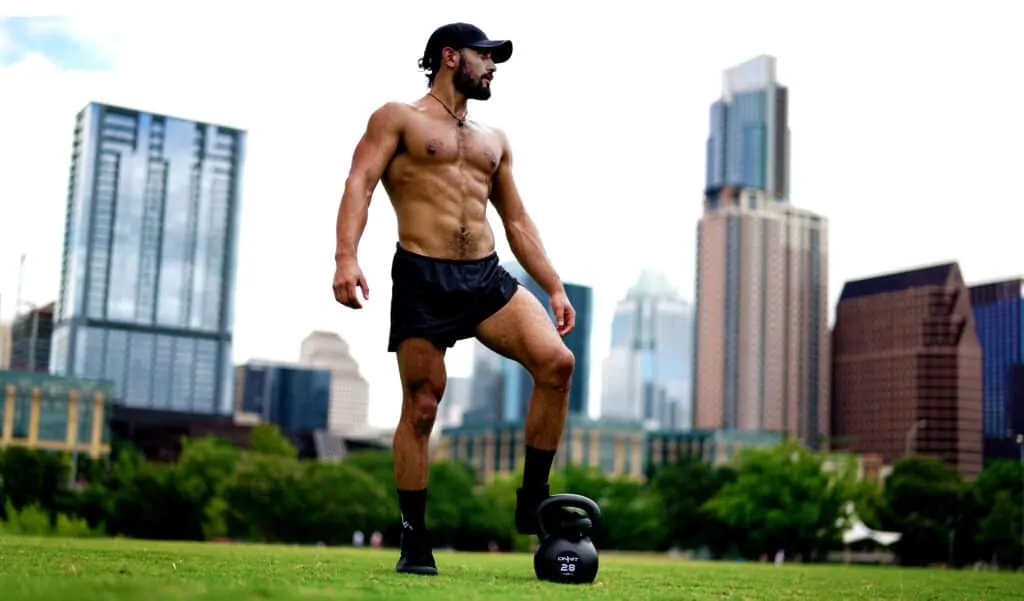
Hands up if anyone remembers the Bowflex home gym commercials?
I’m guessing that’s quite a few of us.
While home gyms definitely aren’t a new thing, the idea of actually working out at home is probably new to many. I myself have had an established routine of leaving the house to hit the gym for years, but due to the limitations of the pandemic, have discovered (surprisingly) a new appreciation for having a home training space.
However, before I started and became comfortable with working out at home, I had the obvious question: “How do I structure this?”
Here I’m sharing some tips I and and others have discovered about structuring a strength training area at home.
Strength Training at Home 101

The Space
The top barriers to working out at home that trip most people up in the beginning are twofold: space and equipment.
Ideally, we’d all have an extra empty room just waiting around to be transformed into a home gym. But as we know, the ideal isn’t always the current reality, so what do you do with limited space to train?
First things first: see if you can find an area with easily moveable furniture. This will give you the most flexibility as possible in terms of equipment (side note: try to find a closet or other area that can hold several pieces so that they’re out of the way when not in use).
Second things second: move all damageable valuables. Trust me.
Thirdly: if you’re planning on integrating planks or other ground exercises (which you should be) invest in a yoga mat or other large mat to ease the strain on your elbows and back.
Fourthly: add a mirror to the room, if possible. Even if you invest in a more affordable standing mirror strictly for your workouts, it will help you make sure your form is on point at all times. It can also give you that “in the gym” feeling, since most gyms are lined with mirrors.
Equipment
The best investment you can make equipment-wise is pieces that have mutli-usage abilities. In other words, pieces that can be used for more than one movement.
This is where versatile pieces of equipment like kettlebells (yeah, I’m a little biased, but to be fair, I’m biased because of their versatility) shine, because they allow you to basically perform a full-body workout anywhere. Not to mention, they’re compact while also carrying heavy weight, allowing them to also be stored easily. If I had to pick just one piece of equipment, I’d choose kettlebells, but you can also grab heavy dumbbells. I’d also choose a jump rope as one of the most essential pieces for straight cardio, since you can use it for steady cardio just hopping, or HIIT training with aggressive jumping and things like double-unders or high-knees.
Of course you can always invest in more intricate equipment like barbells or even machinery, but here we’re sticking with the basics that can get you the most results with a baseline investment.
Bodyweight
Many people also discount bodyweight as a way to not just maintain gains, but also to make them. A few ways to make bodyweight workouts more challenging to compliment your limited equipment at home are:
- Go slow on reps, especially in the lowering phase. Eccentric training like this has proven to be one of the most effective ways to build muscle fibers. One good way to integrate this at home is to install a removable pullup bar and go very slowly on the lowering phase during your reps. There’s no way you won’t feel the burn.
- Try one-leg or one-arm moves. For example, try one-legged squats or one-legged pushups to increase weight on specific appendages.
- Focus on supersets. This allows you to exhaust the specific muscle you’re working on, which is ideal if you don’t have heavy enough weight. This would look like doing one-legged squats, followed by lateral lunges, follwed by sumo squats, etc…
- Focus on full-body movements. Think kettlebell clean-to-presses, the squat-to-press, etc. These work your entire body and require a very minimal amount of space, while also getting your heart rate up.
Don’t Forget the Back Yard

These tips might seem like they require a lot of space, but truthfully, most can be done in a small area as long as you’re conscious and controlled in your movements.
However, if you have a back yard, you also have the perfect space to perform more explosive, bigger movements like burpees and swings. You can also utilize equipment like heavy balls outside without fear of knocking something over!
If you’re feeling like space is a little tight indoors, don’t let the change of being outside deter you – take it as an opportunity to get in some vitamin D simultaneously with your training.
Above all, don’t let lockdown get YOU down. It’s easy to lose motivation in the face of nothing being open and the future being uncertain, use take this time to not only focus on optimizing your home, but also to turn inward and really define your goals so that they can never leave you (aka: make them portable).
Do you have any suggestions for optimizing a home gym? The whole fam would love to hear it below!
Fine advices. What about résistance bands? They get along very well with kettlebells and body weight.
Resistance bands are great to incorporate with kettlebell and bodyweight exercises! I highly recommend you utilize them if you have them!